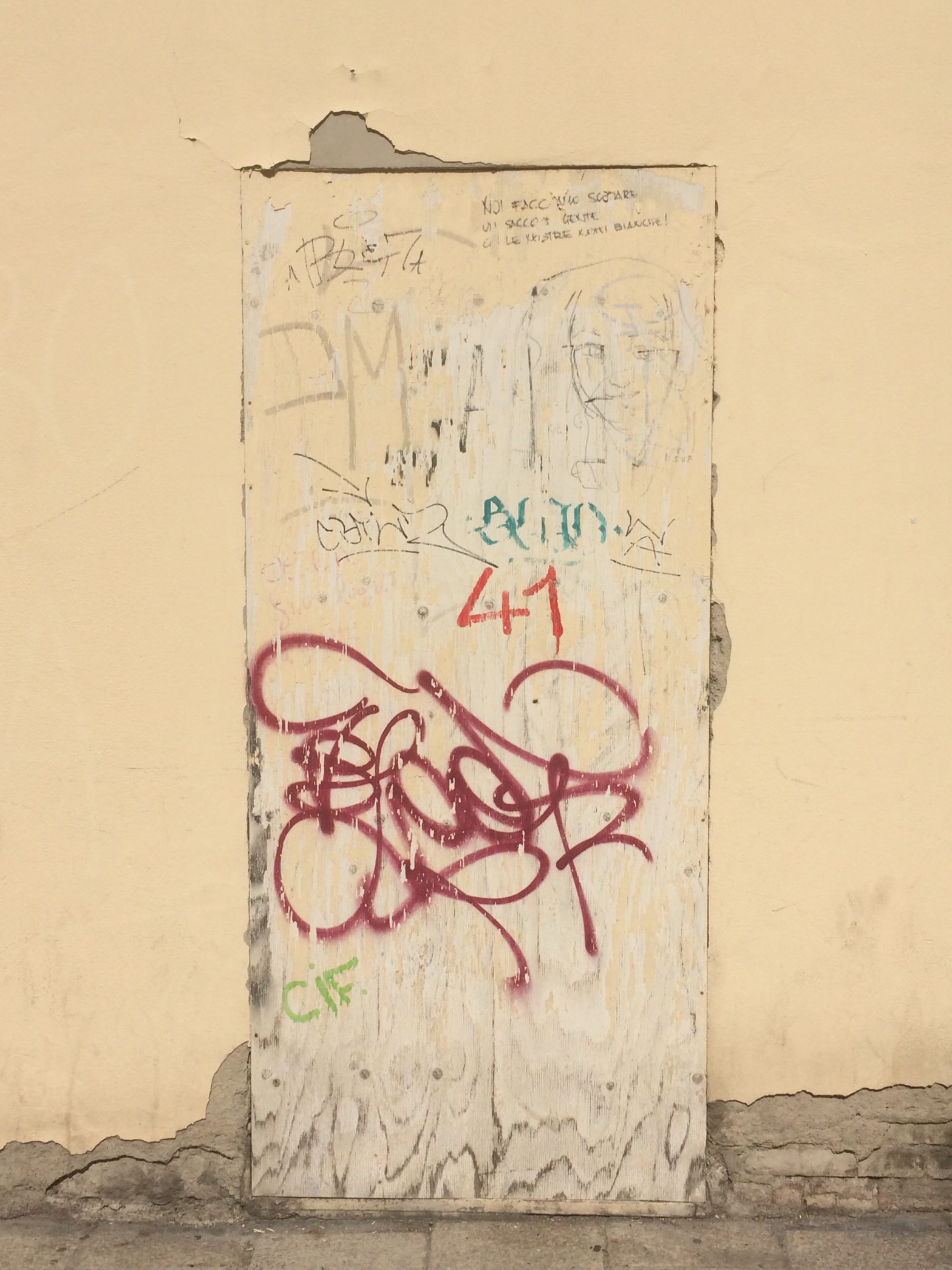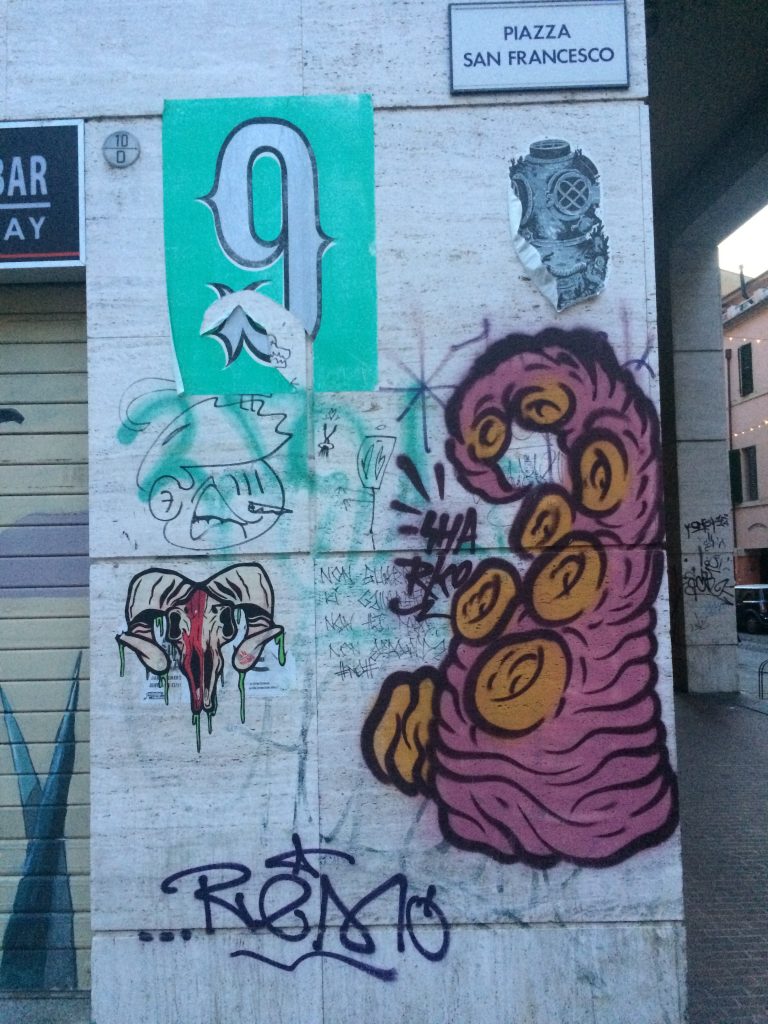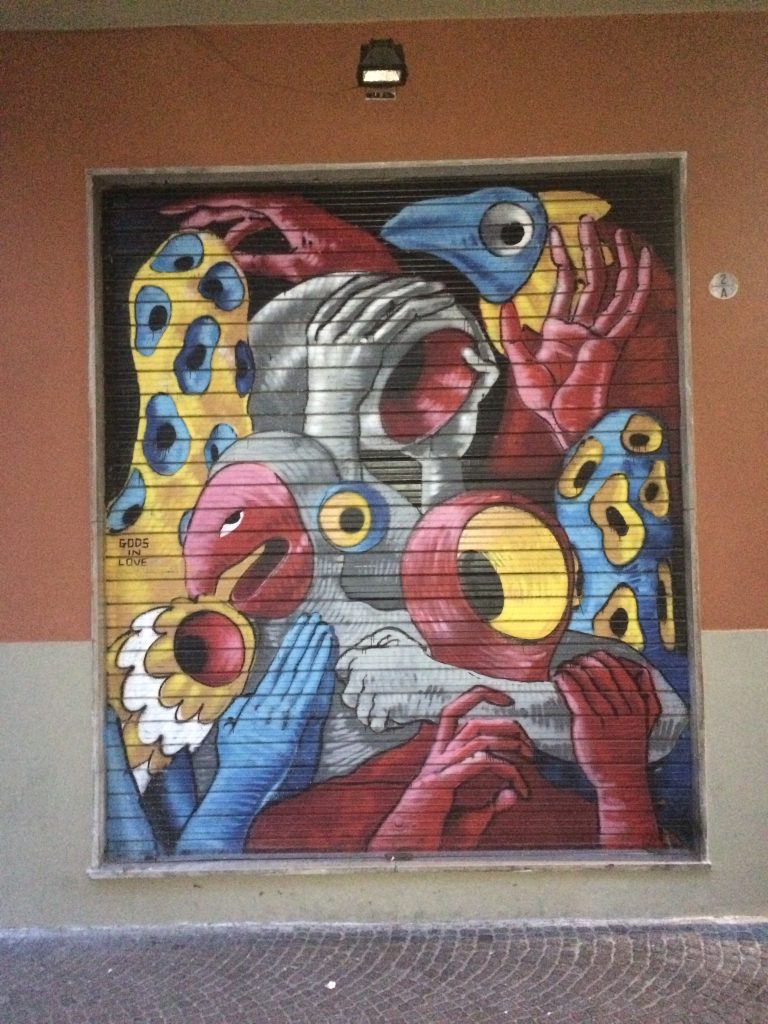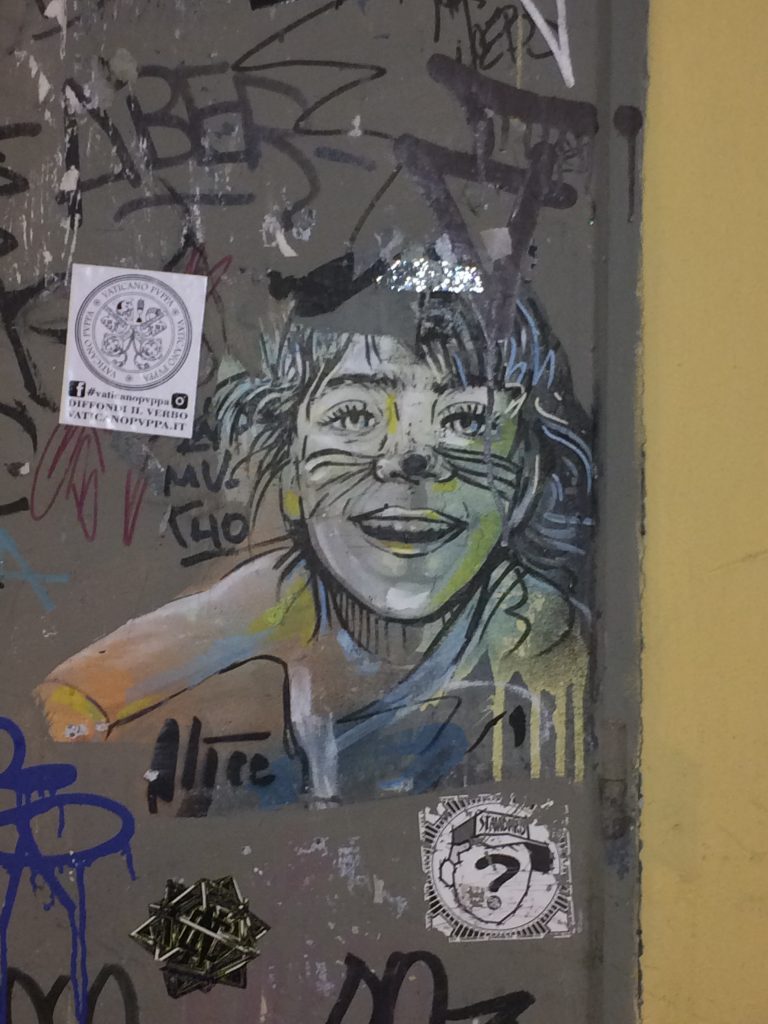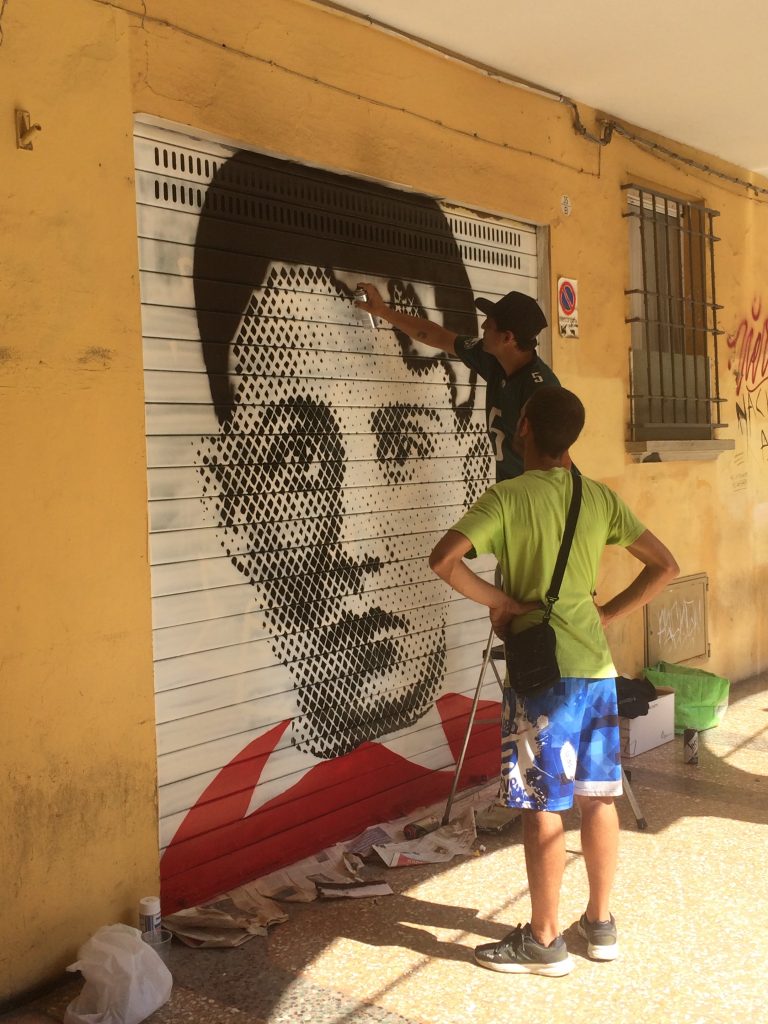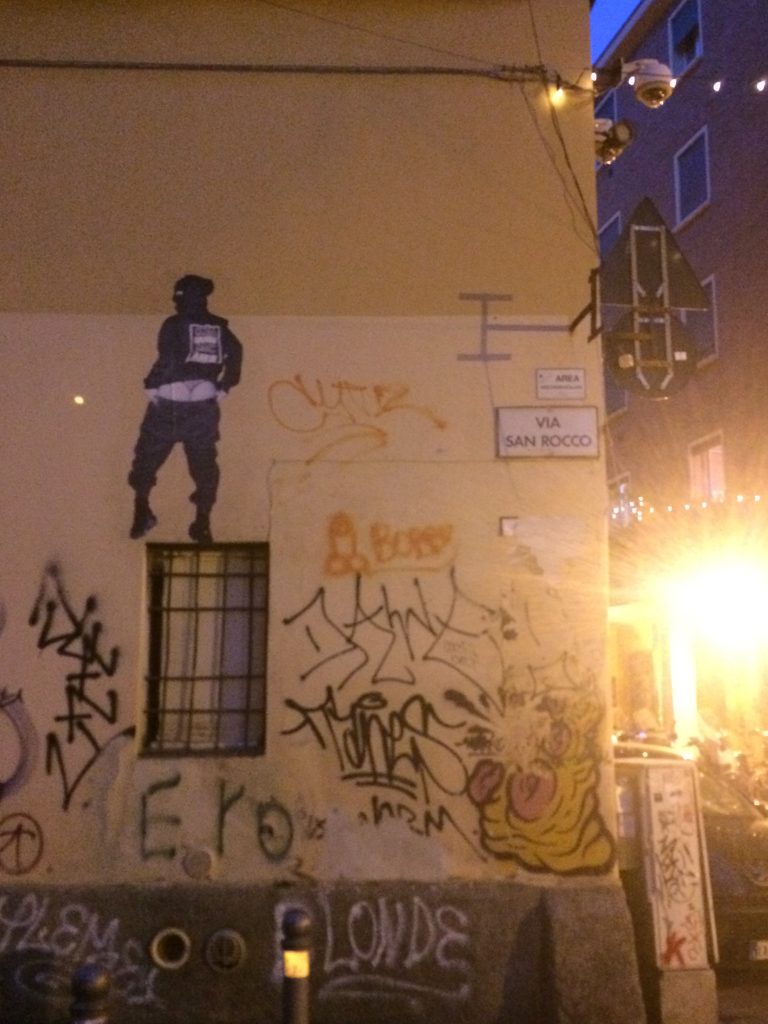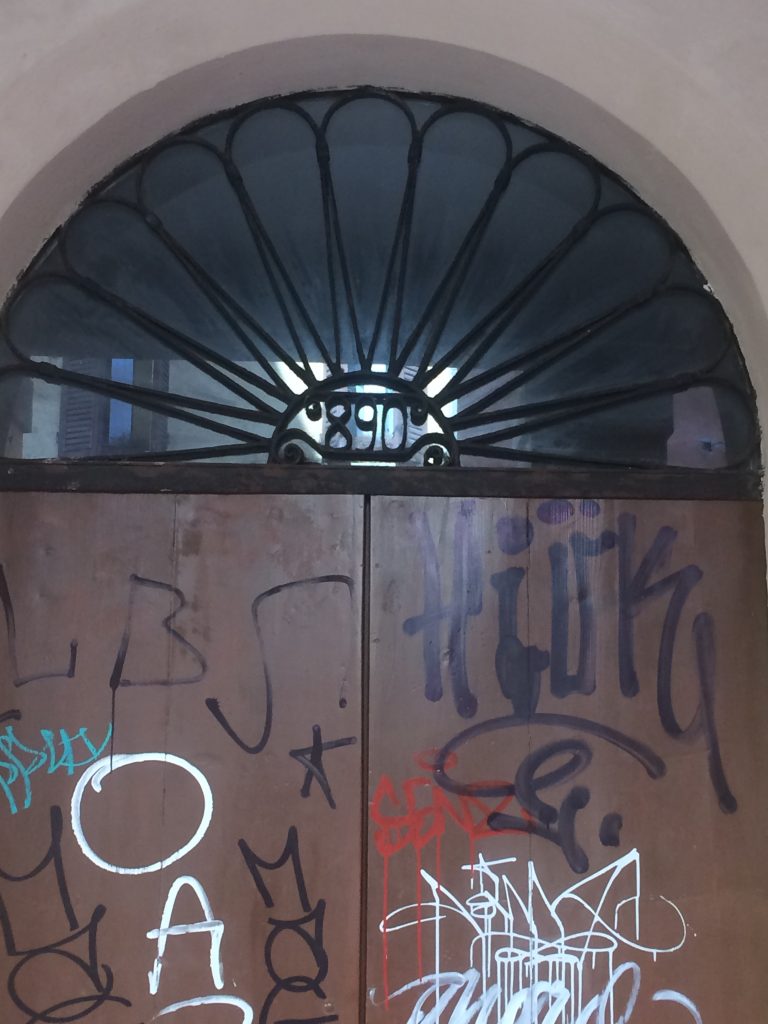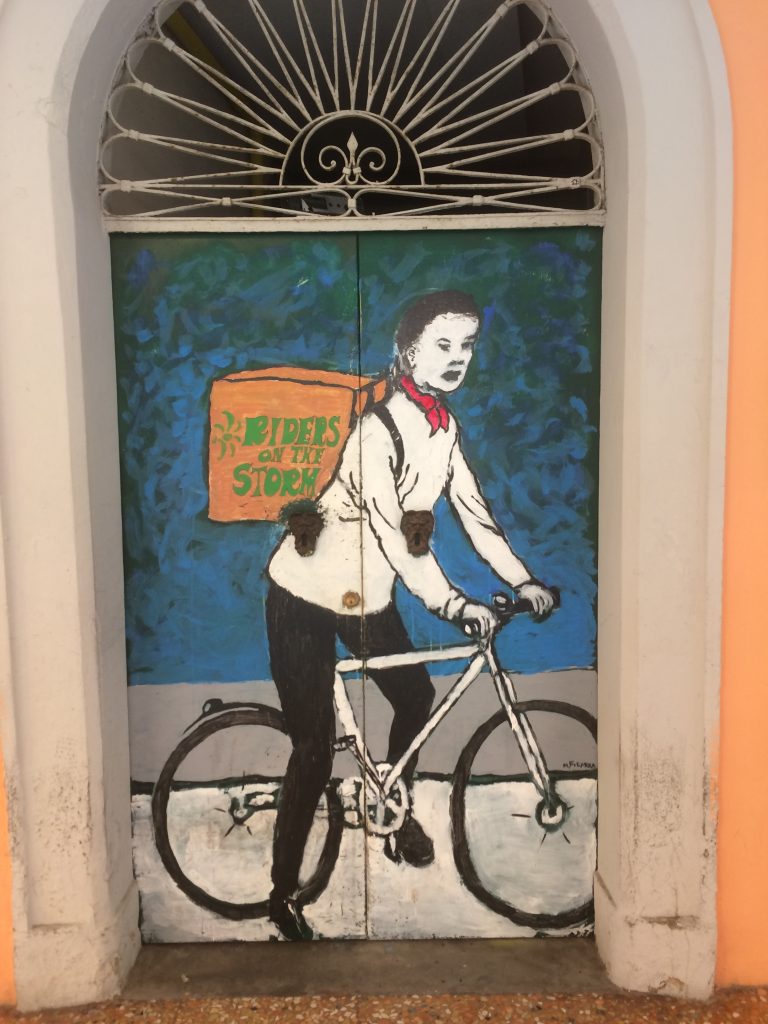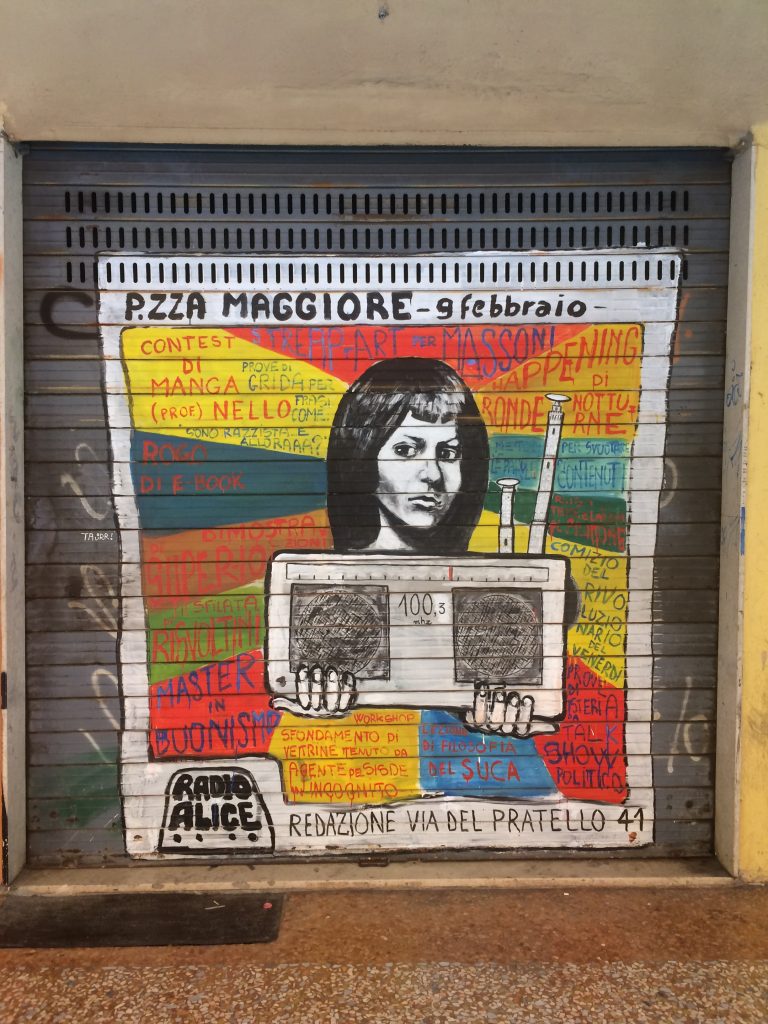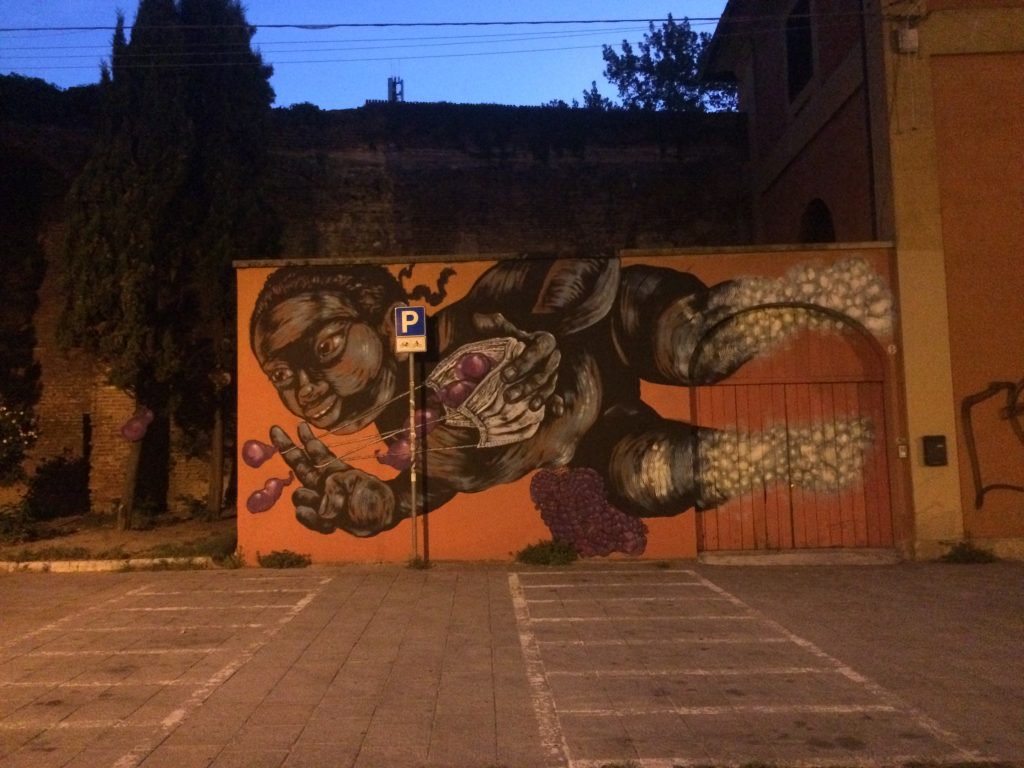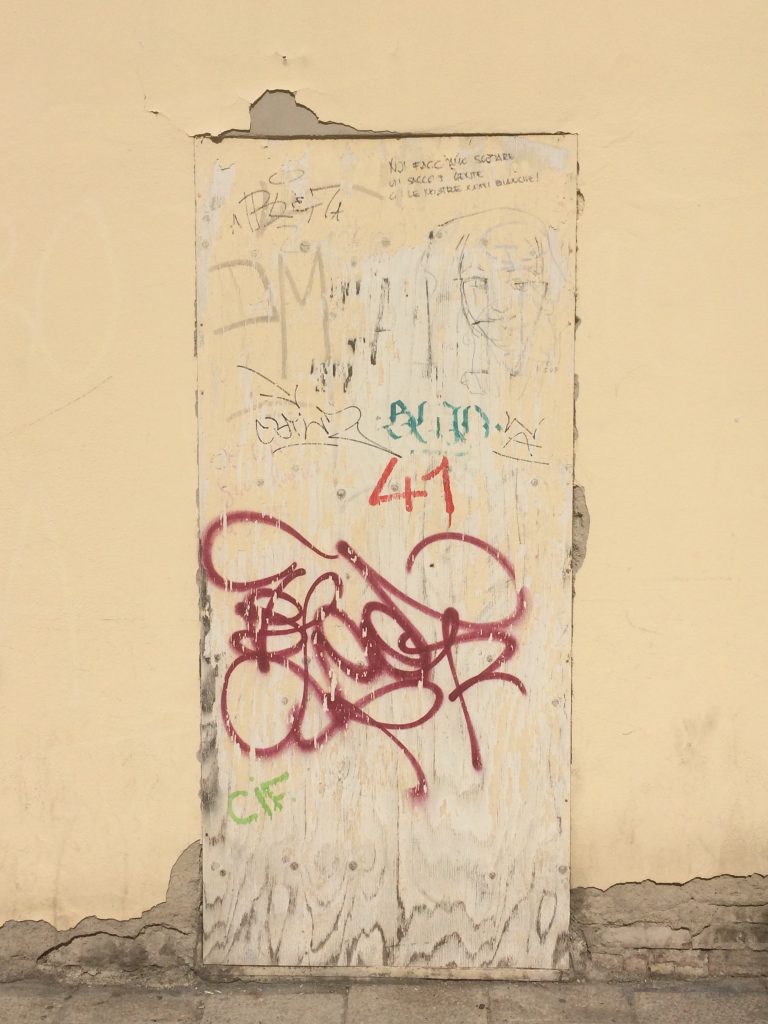Graffiti is by now broadly considered to be a legitimate form of art and it has gained increasing recognition from official art institutions such as museums. Urban wall painting, however, emerged as an illegal practice that is accessible to anyone who can source the necessary materials and tools. The acknowledgement of graffiti as art is having a set of repercussions on this practice, on its value in the urban space and on those who carry it out. In this post I look at the case of Via del Pratello as an example of how the use of the category of ‘street art’ by local authorities and art institutions is generating conflicts over the definition of what art and beauty are and over the acceptable practices that can be allowed in public spaces. One of the aims of this short blog post is to trace connections between the definition of what art is and its employment in the construction of more profitable and secure spaces. In so doing I hope to elicit lateral thinking and a wider understanding of what security is, what it looks like, how it is obtained and who actually benefits from it.
Painting and writing on urban walls
I would like to engage this matter by posing an apparently paradoxical associations between a set of actions and circumstances that recently occurred in the Pratello neighborhood. What connection exists between:
- a famous street artist being arrested for realizing a serie of wall paintings,
- organizations of residents spontaneously painting the street’s walls out of their own pockets in order to cover what they see as ‘urban degradation’ (tags and paintings),
- and the Municipality-sponsored projects of legal ‘street art’ in the area?
Instances of these apparently contradictory phenomena occurred in the space of two years in Via del Pratello. While these are just some examples of circumstances that are absolutely not infrequent in Bologna, what makes them of particular interest is their geographical and chronological closeness. In fact, one would genuinely wonder how it is possible that such different and inconsistent responses to graffiti could occur almost at the same time in the same place. What this shows is the tension and conflict created by the activity of people who express ideas through painting on urban walls. Such practice lays bare the divergence and clash between radically different ideas of what is beautiful, and how it should be achieved as well as how the public space -walls in this case- should be correctly used.
The walls of Via del Pratello have long been a space of expression and a means of communication for many different people (artists, militants and marginalized people). Like in many other parts of Bologna -and other cities across the world- wall painting and writing mostly occurs outside the bounds of the law and exposes its authors to legal consequences. Unless one assumes that the only reason behind wall painting is the obsession for adrenaline and transgression, it must be acknowledged that street writers and painters put their own freedom at risk for the purpose of communicating something they feel quite strongly about, be it through elaborated images or just a few messy sentences. In many cases, they also make walls speak of the most invisible realities that exist in a certain neighborhood or area,making the pursuit of an aesthetic improvement of peripheral areas a tool for denouncing the oppression and marginalization people experience in such places or to keep alive bits of history their less-known history.
This is often misunderstood, disregarded and openly criminalized by some of the residents as well as by those who are in charge of political and juridical power. The two main arguments against the use of walls and urban surfaces for writing and painting is concerned with the protection of private property and the preservation of urban aesthetics from the defacing of building fronts. Associations of residents and shop owners often engage in public campaigns to call for the authorities to intervene or, more often engage in direct action and ‘clean up’ walls from tags with thick layers of monochrome paint. Their idea of beauty and order is associated with ‘cleanliness’ and ‘orderly walls’ that do not show the signs of the many different people who cross them. Legally backed by the laws on the protection of private property and politically supported by both the conservatives and the liberal-democrats factions of the city, these organizations often receive economic support by the Municipality and other residents to restore the beauty of the city’s walls.
Interestingly, in recent years some organizations as well as local politicians operated a shift in the discourse against street writing. It has become more and more frequent to hear of projects of inclusion and recognition of the ‘healthier’ part of wall painting. The distinction between the acceptable and the indecent defacement of buildings is usually obtained by deploying the concept of ‘street art’ which has become quite popular in Italy in coincidence with the recognition of some forms of wall painting by museums and local institutions. The unhealthy part of the equation is represented by any application of paint or ink on walls that does not pursue a conventional idea of beauty. This positive openness to ‘street art’ seems to come at the expenses of many street writers and painters, in that, as many ‘street artists’ often remind us, the starting point of their ‘career’ is precisely the ‘indecent’ writing and tagging on walls. Thus this should not be detached from but rather seen as essential to the existence of what is now being recognized as a legitimate form of art.
The creation of legal spaces for street art and its increasing inclusion in commercial exhibition in museums however does not represent an acceptance of this practice across the board. The case of the arrest and conviction of the famous street artist AliCé for a set of works she realized on the walls of Bologna (one of which in Via del Pratello) seems to suggest that even within the same city, the state’s institutions adopt contrasting modes to deal with wall painting: while the Municipality took a more inclusive approach, the tribunal sanctioned the actions of a wall painter who is largely recognized as a ‘street artist’ (AliCé herself rejects such label in that, she contends, it was created by the power in order to repress, control and commercialize graffiti making).
There is an interesting process that seems to emerge from these confrontations that are taking place onto urban walls: the inclusion-cum-education of those forms of wall painting that can generate some sort of revenue either by secluding them into galleries and museums through the format of “street art exhibitions” – which is a paradox in itself- , or by creating districts – and this is the case of Via del Pratello – in which the supposedly most dignified segments of wall painting practice is encouraged and subsidized for the purpose of beautifying an area and making it more palatable to consumption and investments. Not casually, the image of the street has gradually shifted from a place of petty crime and decay to one of a lively, alternative and hipster place. Unfortunately the list of neighborhoods around the world – and Europe in particular – where processes of gentrification were largely driven by a bohemian culture and an intense artistic activity is too long to expect anything different of Via del Pratello. All the elements are in place and the ball has already started rolling.
What is significant here though, is the intersection between the artificial creation of an authentic beauty and spirit of a place and the heavier security interventions that accompany it. In fact, it would be quite difficult for hipsters and the like to enjoy the discrete shabbiness of wall paintings if they had to constantly check if their wallet is still in their pockets and bags. In this respect I think it is important to recognize how processes of beautification are not alien to processes of securitization but, rather, they often go hand in hand. The pursuit of a certain aesthetic and the embellishment of place could and should therefore be seen as security strategies and tools for increasing the economic value of neighbourhoods.
